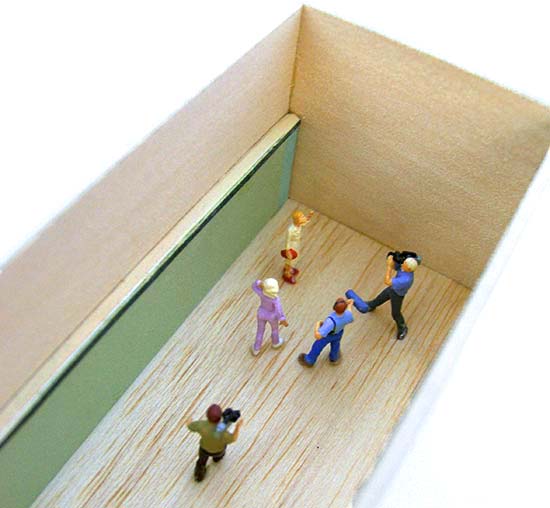Donald Judd Remix
March 18-April 23, 2011
Donald Judd's boxes defined minimalism by setting an iconic example. A priori decisions, industrial materials, proportional relationships, hand of the artist removed, non-referential, clean, serial. They were killers that changed the way we viewed forms and works of art. Even later critical interpretations—Chave's connections to Vietnam-era military industrial complex and Fried's theatricality—couldn't alter the stripped down essentialism.
boxes, boxes, boxes
It would take time for artists to assimilate and interpret his forms. I remember a Forum show at the Carnegie that included the work of Millie Wilson, a California artist, who used Judd-like boxes as wall display units for her feminist merkins, the coiffed red hair contrasting with the uniform bases. For the first time, I realized how the power of Judd's ideas and forms had lasted but was also open to subversion and interpretation.
I doubt that the four artists in Donald Judd Remix based their work directly on Judd, but there is the acknowledgement of a minimalist structure. Jeremy Boyle's multiples, placed asymmetrically in the gallery, changing with every installation, create white noise; Mark Franchino's nested boxes play upon the craft involved in art crates and the ubiquitous duct tape that tends to overwhelm shipping boxes; Bill Radawec populates small boxes with scenarios/dioramas/narratives created with train buff figures, creating a voyeur's paradise; Janet Towbin draws flattened boxes, adding the decorative element missing in Judd's empty works. While pointing to aspects of the originals—serialization, display, materials, etc.—they add what Judd left out, creating a new kind of minimalism, or at least expanding the original definition by emphasizing meaning, the personal and the hand of the artist. I have always thought that Judd's stringent definition of minimalism eliminated too much work that was minimal, another example of an exclusive decision rather than an inclusive one. But of course, artists have already stretched the definition, and history can always be rewritten.
© vicky a clark 2010

